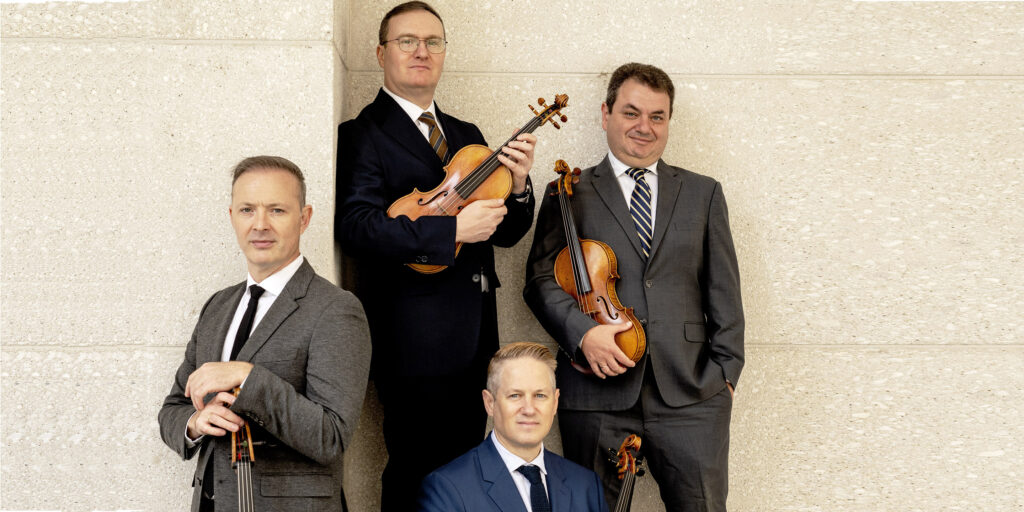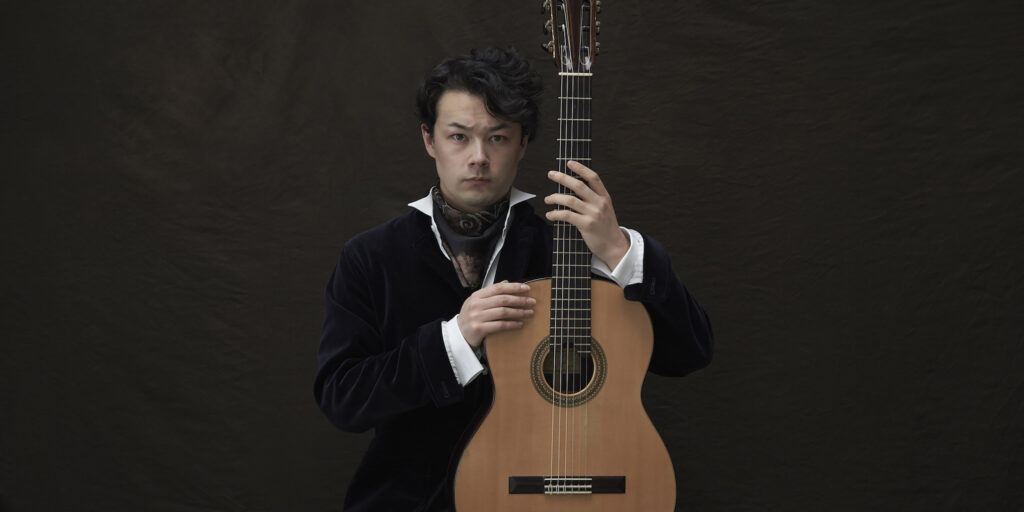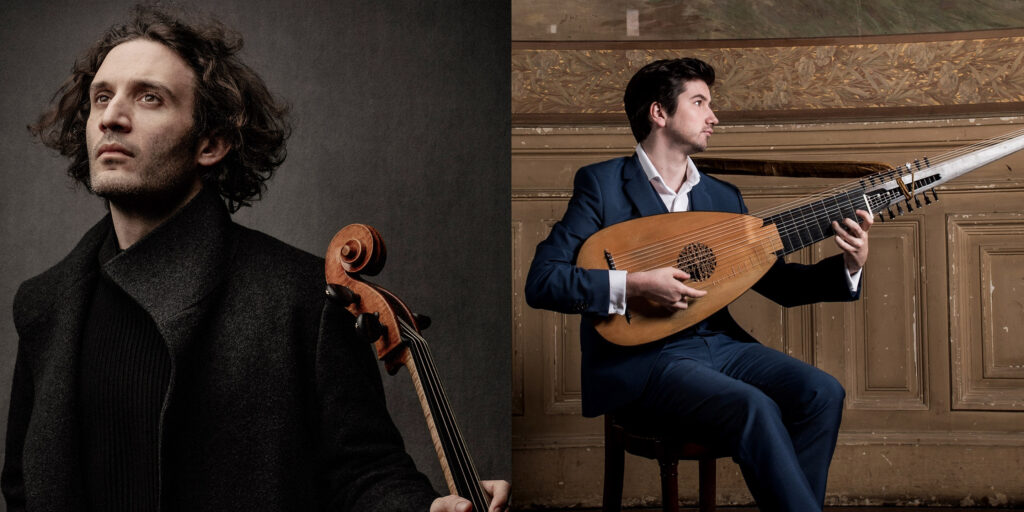Antonio Vivaldi
Siciliana in D minor (arr. J. S. Bach and Alfred Cortot)
Nothing could be more Baroque than an arrangement of an arrangement. The Baroque was a period in music history in which music travelled freely between instruments and instrumental ensembles. Bach’s Organ Concerto No. 5 for solo organ BWV 596, composed sometime between 1713 and 1714, was actually his transcription for organ of the slow movement from Antonio Vivaldi’s Concerto in D minor Op. 3 No. 11 (RV 565) for two violins, strings, and continuo. Bach’s organ version was then in turn transcribed for piano by the French pianist Alfred Cortot (1877-1962) who recorded his arrangement in 1937.
Written in the lilting dotted rhythm characteristic of the dance form known as the siciliana, it evokes a gentle, pastoral mood tinged with tender melancholy, created by the characteristic use of Neapolitan (flat second scale degree) harmony.
Johann Sebastian Bach
Toccata and Fugue in D minor (arr. Busoni)
For the Baroque organist the combination of toccata and fugue caught both heaven and earth in its compositional grasp, pairing fingers and brain, keyboard virtuosity and contrapuntal mastery. In the 20th century Bach’s Toccata and Fugue in D minor became one of the most popular and recognizable of organ works in this genre, thanks largely to its inclusion in Walt Disney’s animated film Fantasia (1940) and its subsequent championing by organists as diverse as the austere E. Power Biggs and the ever-flamboyant Virgil Fox.
The transcription of this organ work by pianist and industrious Bach-transcriber Ferruccio Busoni (1866-1924) sets itself the task of conveying in piano sonority not only the flamboyance of the Toccata’s virtuoso flourishes, but also the complex and rich colouring of the thickly contrapuntal textures that make up the Fugue, with its chattering violinistic subject and many pedal points. For this the pianist’s right pedal foot must be as skilled as the fingers on his two hands.
Franz Schubert
Moments Musicaux Nos. 2 and 3 D. 780
The six small piano pieces that Schubert published in 1827 as Moments musicaux are as close as we can get to hearing what a Schubert evening, a Schubertiade, must have sounded like with Schubert himself at the piano. These pieces, while congenial in mood, are intimate, almost confidential in tone. They are meant for home entertaining, and not far removed from the spirit of song. The melodies are singable and the keyboard range used extends little beyond the range of the human voice.
No. 2 in A flat opens with a succession of lyrical melodic fragments of small range that stop and start as if a daydream were being constantly interrupted, and then re-begun. Even the more sustained tone of the middle section in the minor mode seems to circle contemplatively around a single note, as if caught in a state of reverie.
No. 3 in F minor is the most popular piece in the set and was subsequently published separately under the exotic title Air Russe, presumably because dance- like pieces in the minor mode were thought typical of Eastern Europe. Remarkably homogenous in rhythm, its middle section in F major is more characteristically Viennese than Russian.
Ludwig van Beethoven
Sonata in F minor Op. 57 “Appassionata”
Beethoven’s 23rd piano sonata of 1804-1805 is one of the works that, along with his Fifth Symphony, stands in the public imagination as emblematic of the composer’s explosive temperament; his angry pose of heroic resistance against all forces that would seek to tame his indomitable will. Its outer movements, in particular, explored new terrain in terms of dynamic contrast, expressive range and sheer technical difficulty. It was not by chance that he chose the key of F minor for this work, as this key allowed him to write comfortably for the full keyboard range of his day, from F1 in the bass to a high C7 in the treble, both of which appear in the score.
And as he did in the Fifth Symphony, Beethoven chose to make his point with a bare minimum of motivic material, the elements of the entire first movement all being presented on the first page of the score. First there is the eerie pattern of dotted rhythms that softly rise through an F-minor arpeggio to culminate in a mysterious trill. Then the repeat of this gesture a semitone higher introduces the idea of Neapolitan harmony (on the flattened second degree of the scale). This is answered by a corresponding semitone drop in the bass, setting up an explosion of sonority that rips down from the high treble to the very bottom of the keyboard. The motivic intensity of this movement is so dense that even the second theme, in A flat, is a mere variant of the first. The opening fireworks are balanced, formally, by an extended coda (as in the Fifth Symphony) that first erupts in apocalyptic fury and then relents to end the movement in a quivering tremolo, seething with menace still, that recedes into the sonic distance.
The Andante con moto slow movement, a theme with four variations, is everything that the first movement is not: emotionally stable and harmonically conventional, its expressive gestures played out within a relatively small range circling around the middle of the keyboard.
The dying embers of fading anger that ended the first movement return to life in the third movement, announced by a clarion call to arms on an unstable diminished 7th chord. This finale is a moto perpetuo of restless 16th notes ranging feverishly in a combination of arpeggios and scale patterns over wide swathes of the keyboard.
Here, too, motivic economy is much in evidence: witness how the second theme is merely a reproduction of the first, but placed in the dominant minor, five scale degrees higher. Things come to a head in a closing Presto section, described by Sir András Schiff as a kind of “demonic czardas,” that stomps and skips until a final whirlwind of moto perpetuo material returns to sweep the work to its conclusion in a cascade of broken chords rattling from the top to the bottom of the keyboard.
Sergei Prokofiev
Sonata No. 6 in A major Op. 82
Prokofiev’s Piano Sonata No. 6 is the first of the three “War Sonatas” (Nos. 6, 7, and 8) written between 1939 and 1944 while the Soviet Union was at war with Nazi Germany. The Sixth Sonata was completed in 1940 and demonstrates well the obsessive rhythmic drive, percussive attack, and dissonance-encrusted harmonies that characterize Prokofiev’s style of piano writing. The work comprises four movements which, given the extreme modernity of their musical language, are laid out in a surprisingly traditional pattern: sonata-form first movement, second movement scherzo, slow third movement, and rondo finale.
The sonata opens with an arresting ‘motto’ that descends three scale steps, doubled with first a major and then a minor 3rd (C natural then C #), creating a brilliantly colourful bitonal effect that, even if it weren’t stutteringly repeated almost 40 times in the course of the exposition, would be memorable. A more tranquil second subject offers a contrasting vision of where things are going, but both are put through the wringer in a development section peppered with repeated notes before the opening motto returns in a recapitulation of brutal directness enacted over a keyboard range of more than six octaves.
The Allegretto second movement has been called a “quick march” and with a dependable four staccato beats to the bar its metrical regularity comes as a welcome relief after the chaotic events of the first movement. Its espressivo middle section adds a more expansive note of mystery and wonder to the proceedings. This movement ends almost humorously as its colourful harmonic pulses veer into port in the very last bar.
The slow waltz Tempo di valzer lentissimo, while lacking any real Viennese sense of lilt, has a wonderful vulnerability about it that is quite touching despite, or perhaps because of the searching quality of its constantly shifting inner voices, even in the more turbulent middle section.
The work closes, like the other two War Sonatas, with a toccata of breathless drive that scampers playfully between tonal centres like it owned them all. It becomes increasingly haunted, however, by the thematic ghosts of the first movement and ends firmly in the grip of the opening motto.
Mily Balakirev
Islamey Op. 18
Islamey is one of those lesser known pieces from the 19th century that nonetheless had a significant impact on successive generations of composers. It was quoted by Rimsky-Korsakov in his Scheherazade, by Borodin in Prince Igor, and it remains in the orchestral repertoire today thanks to arrangements made by Alfredo Casella and Sergei Lyapunov.
Mily Balakirev was the unofficial leader of the Russian Five, a handful of musicians including Rimsky-Korsakov, Borodin, Mussorgsky, and César Cui who sought to ground their works in authentic Slavic musical traditions. Balakirev was himself an avid collector of folk tunes, and it was on a visit to the Caucasus in 1863 that he first encountered the dance tune known as ‘Islamey’ that would become the first theme of his eponymous work for piano solo, subtitled Fantaisie orientale.
A folksong popular among the Tatars of Crimea forms the subject of the work’s more tranquil and lyrical middle section.
Islamey was likely composed as a virtuoso showpiece for Nikolai Rubinstein to perform at a concert held in late 1869 at the Free Music School in St. Petersburg, founded by Balakirev. Rubinstein’s subsequent remark that he found certain passages “difficult to manage” gained the work a reputation for being unplayable and it has doubtless driven many a pianist into physiotherapy—perhaps even psychotherapy—for attempting it. Scriabin was said to have injured his right hand while trying to learn it, and Ravel famously remarked that his Gaspard de la nuit was an attempt to write “a piece more difficult than Balakirev’s Islamey.”
Among the interpretive challenges the work presents is the choice of tempo. Long stretches of interlocking passagework between the hands need to be able to “speak” well on the keyboard if the peppery rhythmic vitality and dancelike character of its opening theme are to be captured. Otherwise all one hears is a blur of notes. For Islamey is more than a mere circus act. It stands at the apex of Romantic-era works for the virtuoso pianist and counts as a significant contribution to the cause of 19th-century musical nationalism in Russia.
Donald G. Gíslason 2016






